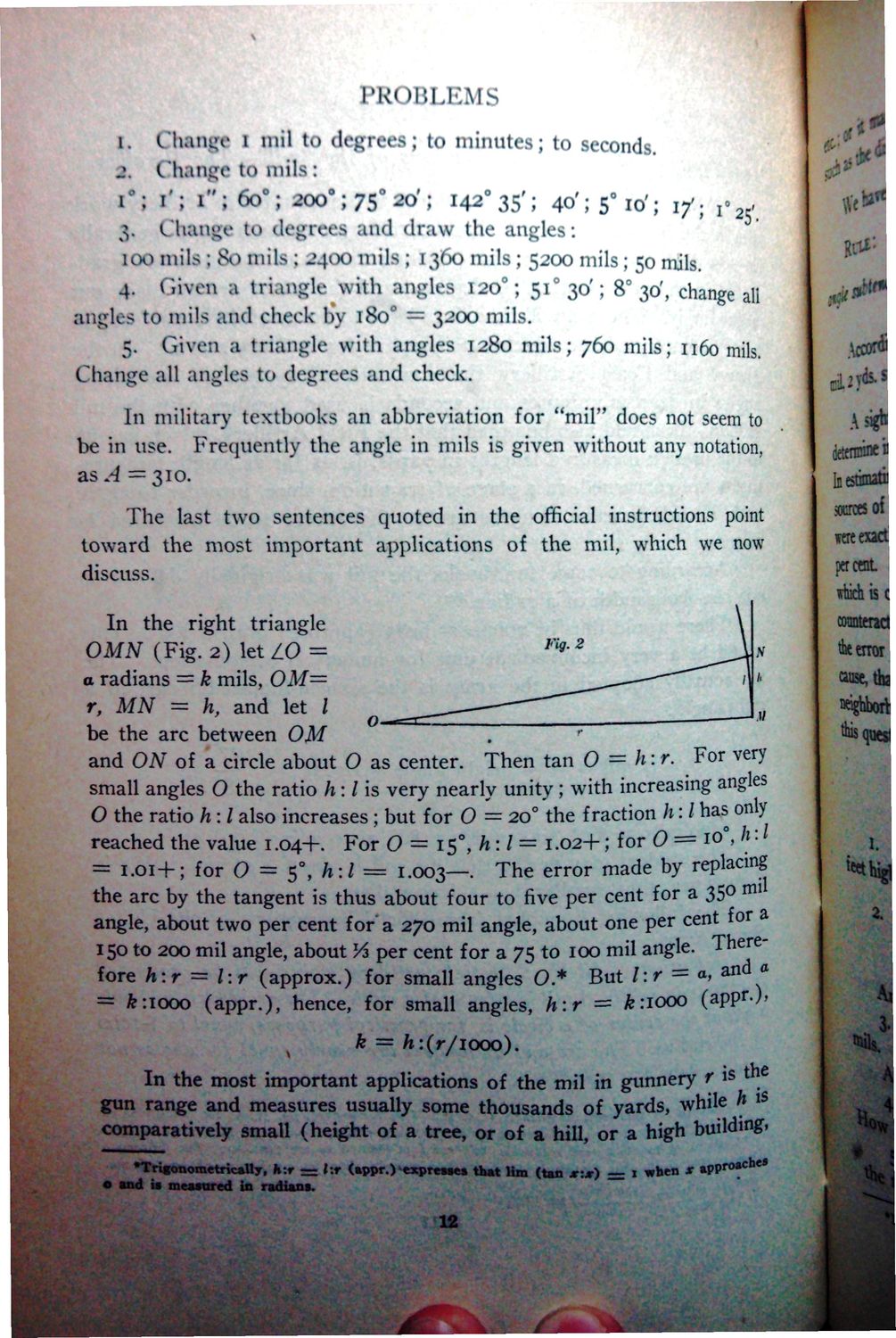| |
| |
Caption: War Publications - WWI Compilation 1923 - Article 46
This is a reduced-resolution page image for fast online browsing.

EXTRACTED TEXT FROM PAGE:
PROBLEMS I. Change I roil to degrees; to minutes; to seconds. 2. (.'lunge to mils: 0 0 r : i ; i" ; 6o°; 200 ; 75 20'; I42°3 5 '; 4 o';5°io'; if. y 2 e , roes 3' 1oo mils ; 80 mils; ^400 mils; 1360 mils; 5200 mils; 50 mils 20 4 30' 5 8° 30', change all 0 angles to mils and check by 180 = 3200 5. tiivcn a triangle with angles 1280 mils; 760 Change all angles to degrees and check. In military textbooks an abbreviation for "mil" does not seem to be in use. Frequently the angle in mils is given without any notation, as .4 = 3 1 0 . The last two sentences quoted in the official instructions point toward the most important applications of the mil, which we now discuss. In the right triangle OMN (Fig. 2) let LO a radians = k mils, OM r, MN = h, and let / be the arc between OJm and OAT of a circle about O as center. Then tan 0 = h:r. For very small angles O the ratio h: / is very nearly unity; with increasing angles 0 O the ratio h: / also increases; but for O = 20 the fraction h: / has only l reached the value 1.04+. For O = 15°, h: / = 1.02+; for 0 = io°, * • 0 = 1.014-; for O = 5 , h:l = 1.003—. The error made by replacing mil the arc by the tangent is thus about four to five per cent for a 35° angle, about two per cent for' a 270 mil angle, about one per cent for a J 150 to 200 mil angle, about A per cent for a 75 to 100 mil angle. Therefore h:r = l:r (approx.) for small angles O.* But /: r = a, and a = fcnooo (appr.), hence, for small angles, h:r = fcnooo (appr.)> k = fc:(r/iooo). the In the most important applications of the mil in gunnery r is gun range and measures usually some thousands of yards, while h is comparatively small (height of a tree, or of a hill, or a high building, *Tri«onomctric«Uy, h:r = lit (mppr.) exprewct that Urn (tan x-jr) — x when x approaches o and is measured in radians. —
| |